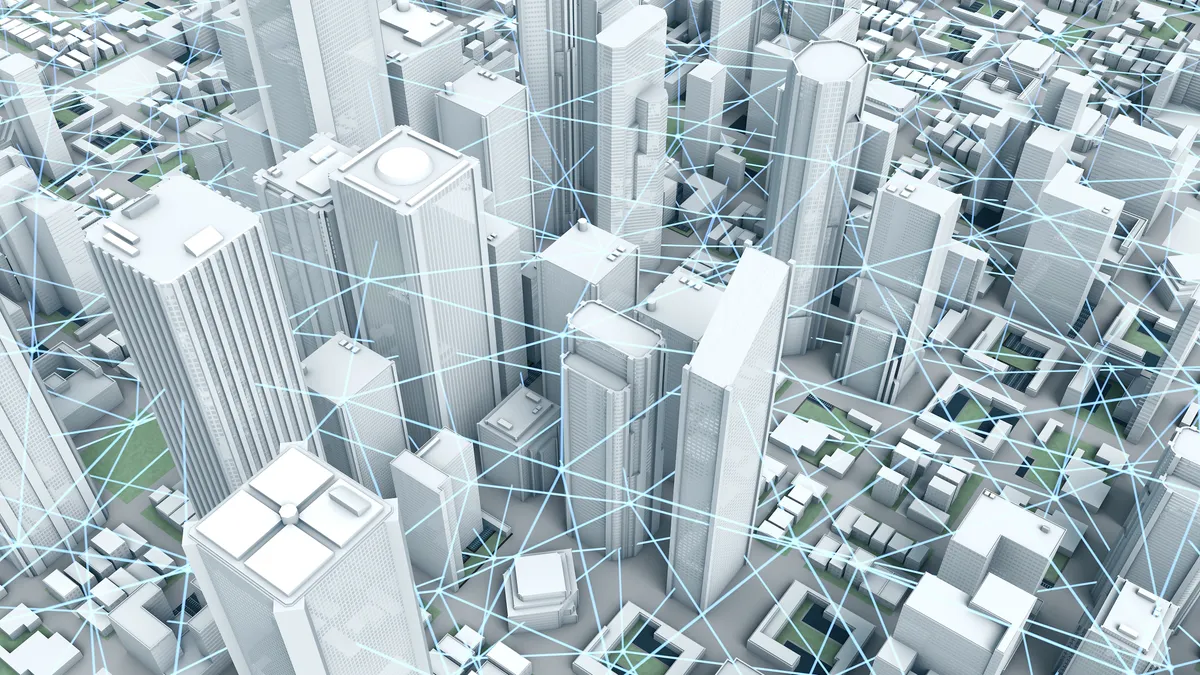Editor's Note: This piece was by Keith Day, vice president of marketing at Telensa. The opinions represented in this piece are independent of Smart Cities Dive's views.
City air quality is a hot topic around the world – in particular levels of emissions, how they are measured and what can be done to reduce them. Ground-breaking new projects are using smart technology to help significantly improve air quality in a dynamic and responsive manner. These projects are using air quality data to wirelessly influence hybrid vehicles, demonstrating the power of smart city automation and its ability to reduce pollution. At the same time, they highlight the importance of more granular, “hyperlocal” air quality data, and raise questions about how such data can be economically harvested and used to improve the urban environment.
One such project involves creating a network connection between hybrid vehicles and available air quality data in the city, so that they can be automatically switched to emission-free electric mode when air quality is poor. Messages are sent to wireless modules in the hybrids to automatically change their driving mode.
Hybrid vehicles combine a petrol engine for long distances with an emission-free electric motor for city driving, a flexibility that makes them popular with city dwellers. But, unlike pure electric vehicles, hybrids usually have a limited electric range – sometimes as little as 10 miles. In addition, although most hybrids have a mode which saves battery power for city driving, there is no guarantee that the mode will have been enabled before a driver enters the city. So the reality is that hybrids in the city at any moment are likely to have a limited time that they can run in emission-free mode.
It is therefore essential to use those limited miles of emission-free driving in areas where air quality is at its worst, or where it is going to be impacting the most people. To do this requires real-time air quality data street-by-street – so-called hyperlocal data.
Today, most major cities are served by just a handful of air quality monitoring stations. These provide highly accurate data covering small, tightly defined areas, but lack granularity and are very expensive. They were designed to report accurate aggregate data, not to identify individual hotspots. There are also crowd-sourcing apps available for smartphones that might fill in some of the gaps, but nothing on offer today can present the user base with the holistic picture required for accuracy and hyperlocal coverage.
Perhaps street lights can provide the answer. They are in all the right places, and sensors can be placed out of harm’s way but with line of sight to particulate pollution. They have a power supply built-in for simple operation, and many of them are already connected and controlled by wireless central management systems. These wireless networks are designed to transport small amounts of data from huge numbers of devices at minimum cost. Combined with a new generation of low-cost sensors, the hyperlocal data needed to widen the adoption of innovations could soon be a reality.
Proofs of concept like these provide excellent examples of how smart city technology can be employed to the benefit of every day citizens. However, they also give a significant insight into how smart city wireless networks can use existing lighting infrastructure to provide a solid underlying business case and a fully paid-up wireless network onto which other applications can then be layered. This means providing cities with highly granular, hyperlocal air quality data which they can immediately act upon, to the benefit of all.










